It's hard to believe that it's been over two years since the last update to this project. Since then, the Instax TLR has consumed countless film cassettes, and traveled overseas three times (breaking down only once, when the motor driver let out the magic smoke on a picturesque bridge in Hakone).
The camera does its job well, but leaves me longing in a couple of areas. Firstly, it's huge! The two lenses, helicoid, and mirror box easily quadruple the bulk of the SQ6 and make it difficult to pack. Top- and front-heaviness present some ergonomic challenges as well. It is a strange looking camera and attracts more than its fair share of odd looks and craned necks. The 80 mm Mamiya lenses render scenes beautifully, but the 40 mm (35 mm equivalent) field of view can feel restrictive at times. Finally, the overall design feels "inefficient" (for lack of a better word) - the TLR body seems like a bizarre growth hanging off the front of the SQ6, and the space inside the camera is still occupied by the original control board, disused and parasitized by a tiny purple PCB, held in place by myriad flying wires.
All this prompted me to start on a new design; something in a more compact package, with a wider field of view, and a more complete, integral design. It so happened that I came into possession of a Super Angulon 47 mm f/5.6 MC lens - one of the widest available lenses that covers a 6 x 9 frame (a 6 x 9 negative has a 100 mm diagonal, which exceeds the diagonal of Instax Square, at 88 mm). This would provide a 24 mm equivalent field of view - plenty wide for my taste. Another great detail about the SA 47 mm is an exceptionally short film-flange distance of 52.2 mm, meaning that the camera can be very compact.
So at this point, I was looking at building a superwide SQ6. It could be made as a simple point-and-shoot, because the wide field of view and relatively small aperture makes for very simple scale focusing, no rangefinder or ground glass required. It would be extremely simple to carry on as before, and wire in a motor controller and glue a thin helicoid between the lens and camera body. But that wouldn't be much fun, would it?
I decided to add the following features, to spice things up:
- Built-in metering: The previous iterations had no light metering capability. I added a small logarithmic light-to-voltage converter behind the frosted window originally reserved for the self-timer light. The 7 LEDs on the back (which are usually used as a "mode" display) show the selected aperture value and calculated shutter speed for the current lighting conditions.
- Built-in viewfinder: A wider lens means a wider viewfinder is needed. The original ~65 mm viewfinder has been "embiggened" by placing a -100 mm FL plano-convex lens in front of the viewfinder.
- Motorized focus and retractable lens: A fixed lens and helicoid adds significant bulk, which I experienced with the 80 mm single-lens prototype I had originally made. The unmodified SQ6 has a motor-driven lens that can fully retract into the camera body - so why not repurpose this for the SA 47 mm? Circuitry was added to hijack the existing focus motor, so that the lens can collapse into the camera body for storag, and extend to several focus "set points" when in use.
Since the SQ6 was first released, Fujifilm also added two new colors to the roster - bright red and light blue. I found a nice light blue example to use as my starting point (and definitely not because I accidentally broke the grey camera I had originally intended to modify). I removed and examined the original main control board - it is a pretty complex affair utilizing a Renesas RL78 MCU, with drivers for the film eject motor, focus motor, shutter solenoid, and flash.
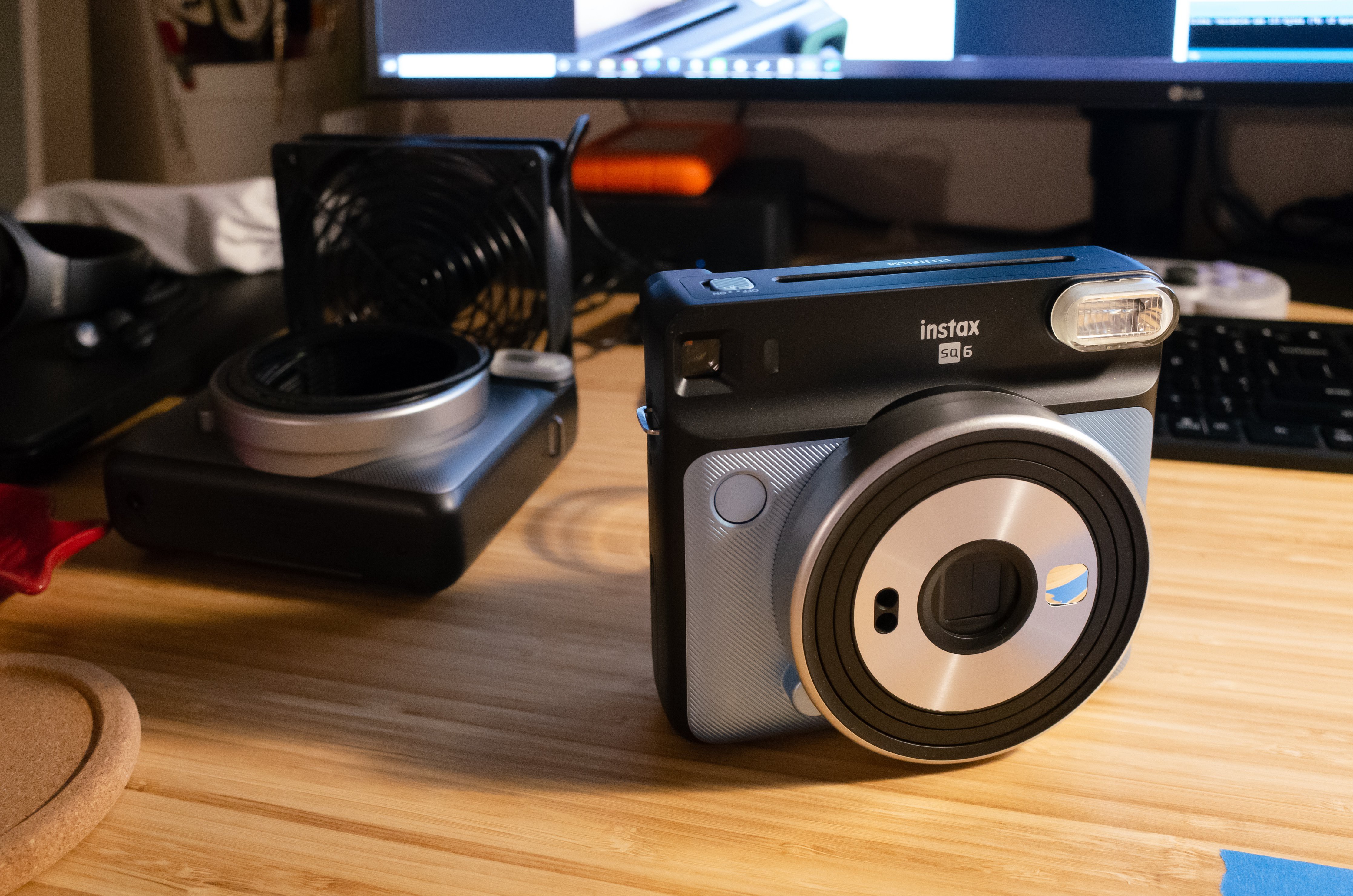
I designed a drop-in (solder-in?) replacement for the main control board, using a Sparkfun Pro Micro (Atmel ATmega 32u4) as the brains for the operation. A good old-fashioned Toshiba TB6612FNG dual-motor driver propels the film eject and focus motor, and a Broadcom APDS-9007 measures light intensity. The most difficult part was finding an appropriate ribbon connector for the original focus mechanism, which bakes a DC motor, home switch, and photointerrupter onto a single flat flex circuit. Some careful inspection and measurement found that a 9-pin, 0.3 mm pitch staggered connector from Hirose fit the bill.
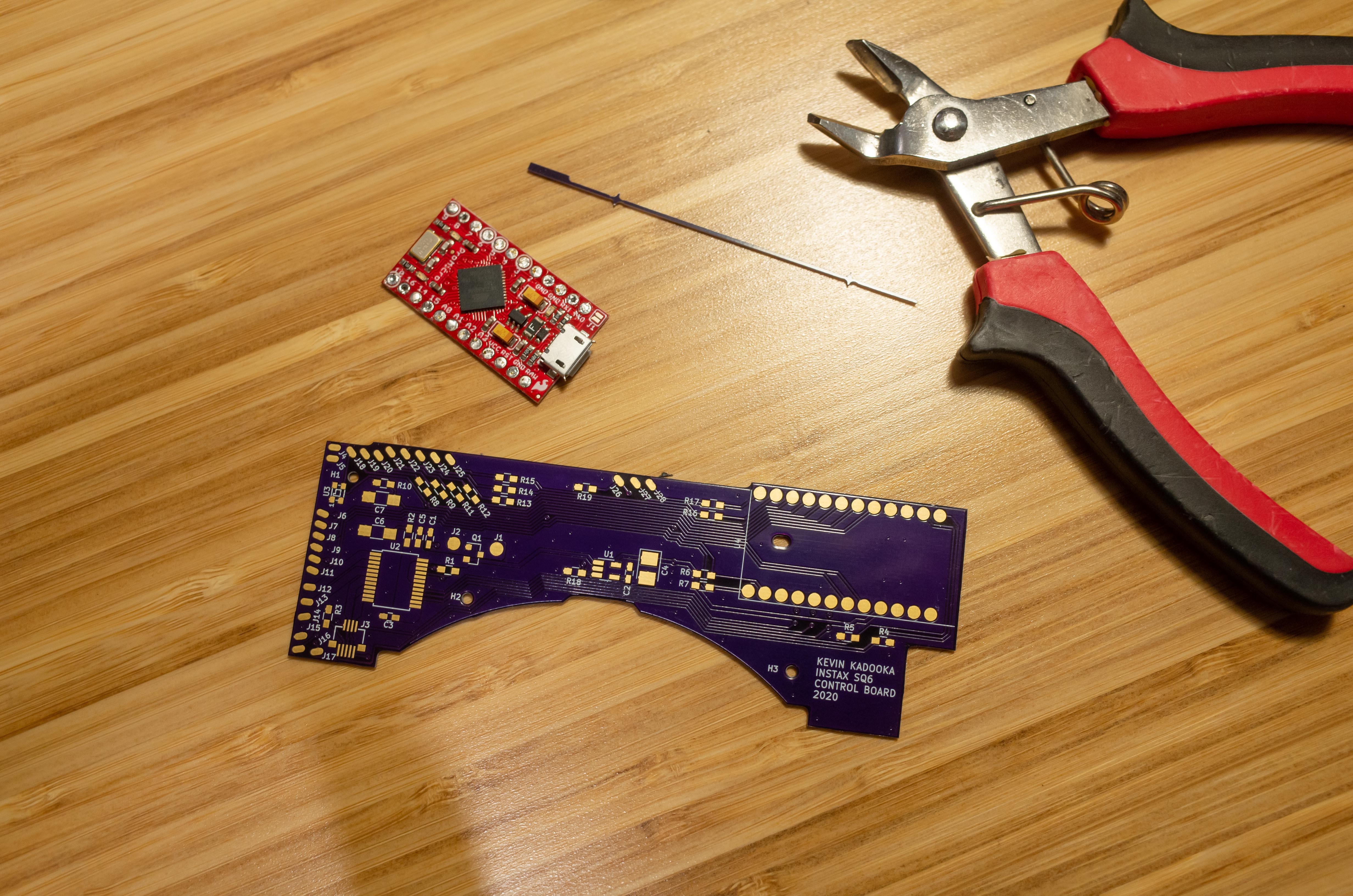
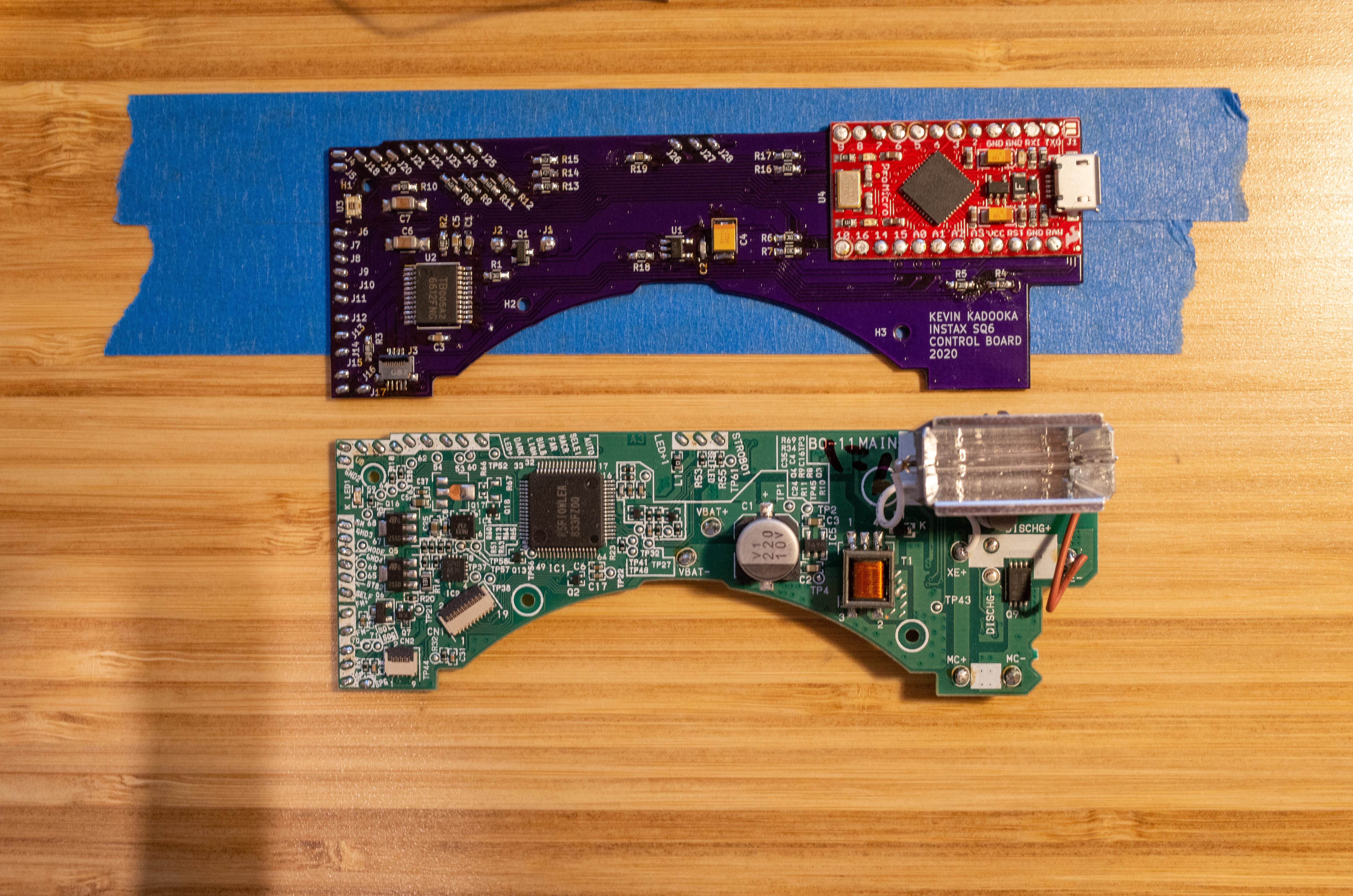

The lens unit disassembles easily, and only the three outer rings and the focus unit are needed. The focus helicoid has a geared section that engages with the focus motor and pushes the unit in and out. A photointerrupter counts revolutions of the motor and provides feedback to the MCU.


Wiring up the new control board is straightforward, but tedious. There are 25 wires that connect the various switches, LEDs, batteries, and motors, and all must be carefully de- and re-soldered.
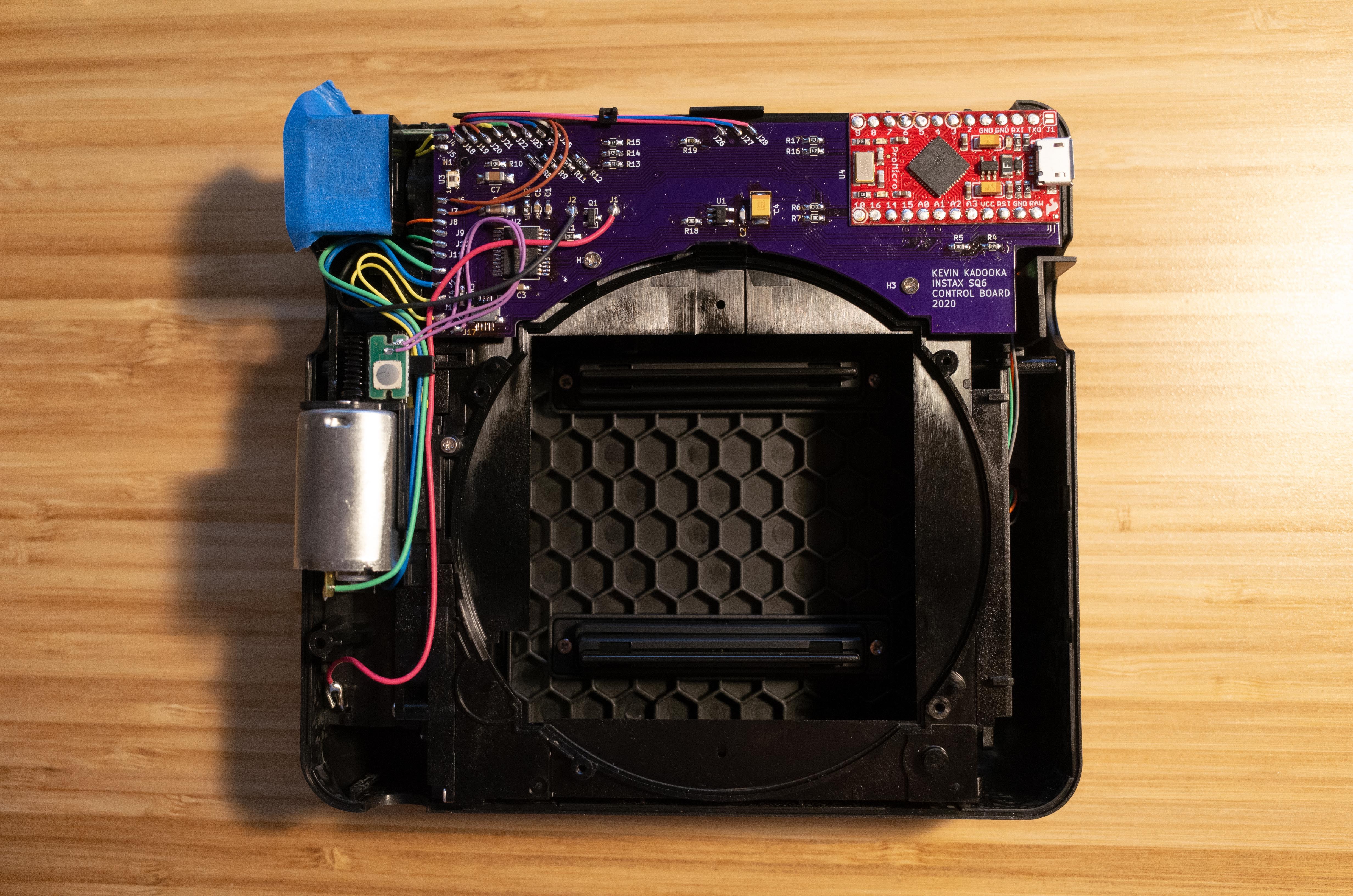
Only two mechanical modifications were made to the camera. The first was to add a "monocle" to the viewfinder, essentially a small 3D printed frame to hold the plano-convex adjustment lens to widen the field of view. The second is another 3D printed ring to adapt the SA 47 mm to the SQ6's lens assembly.
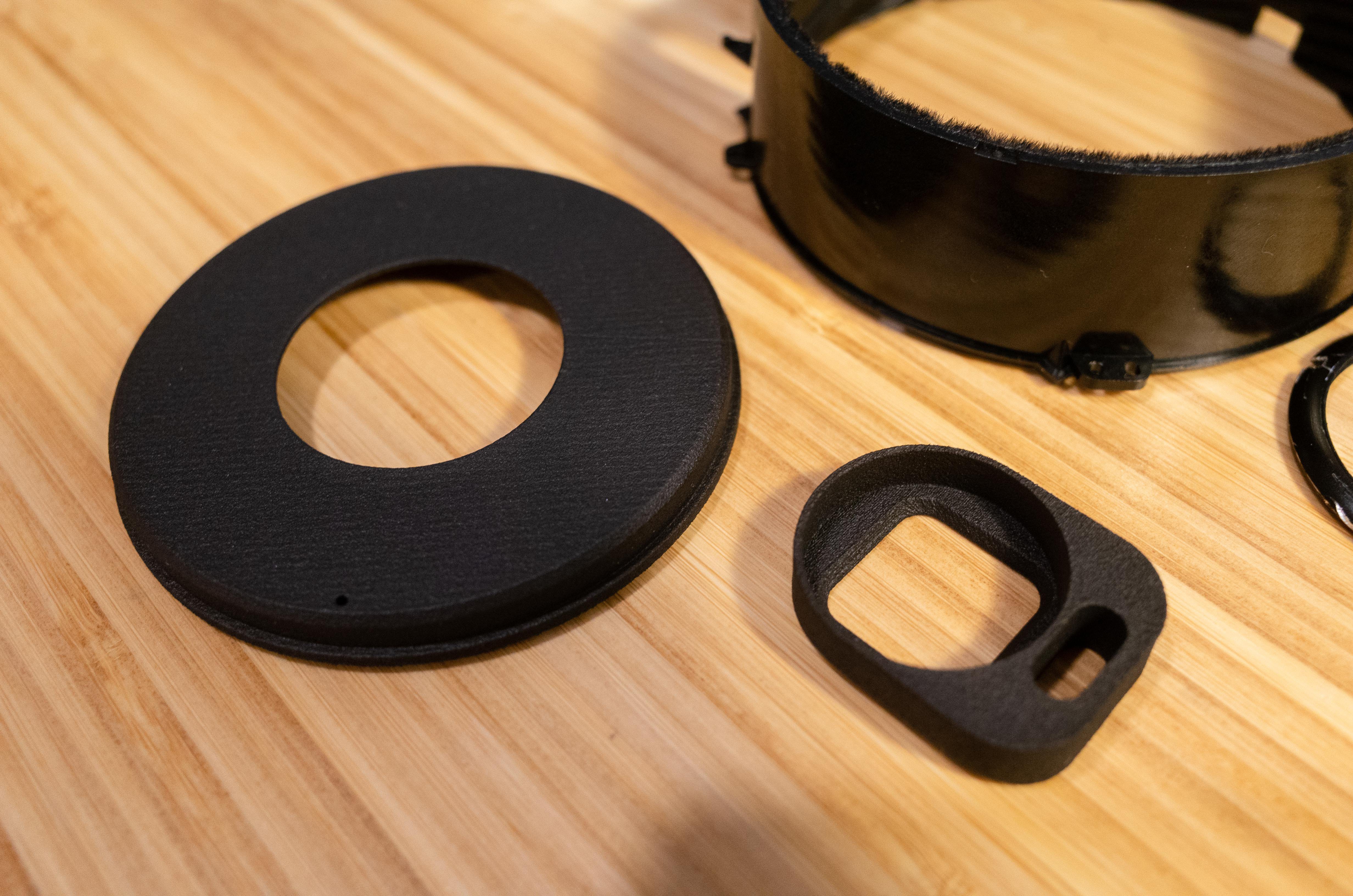
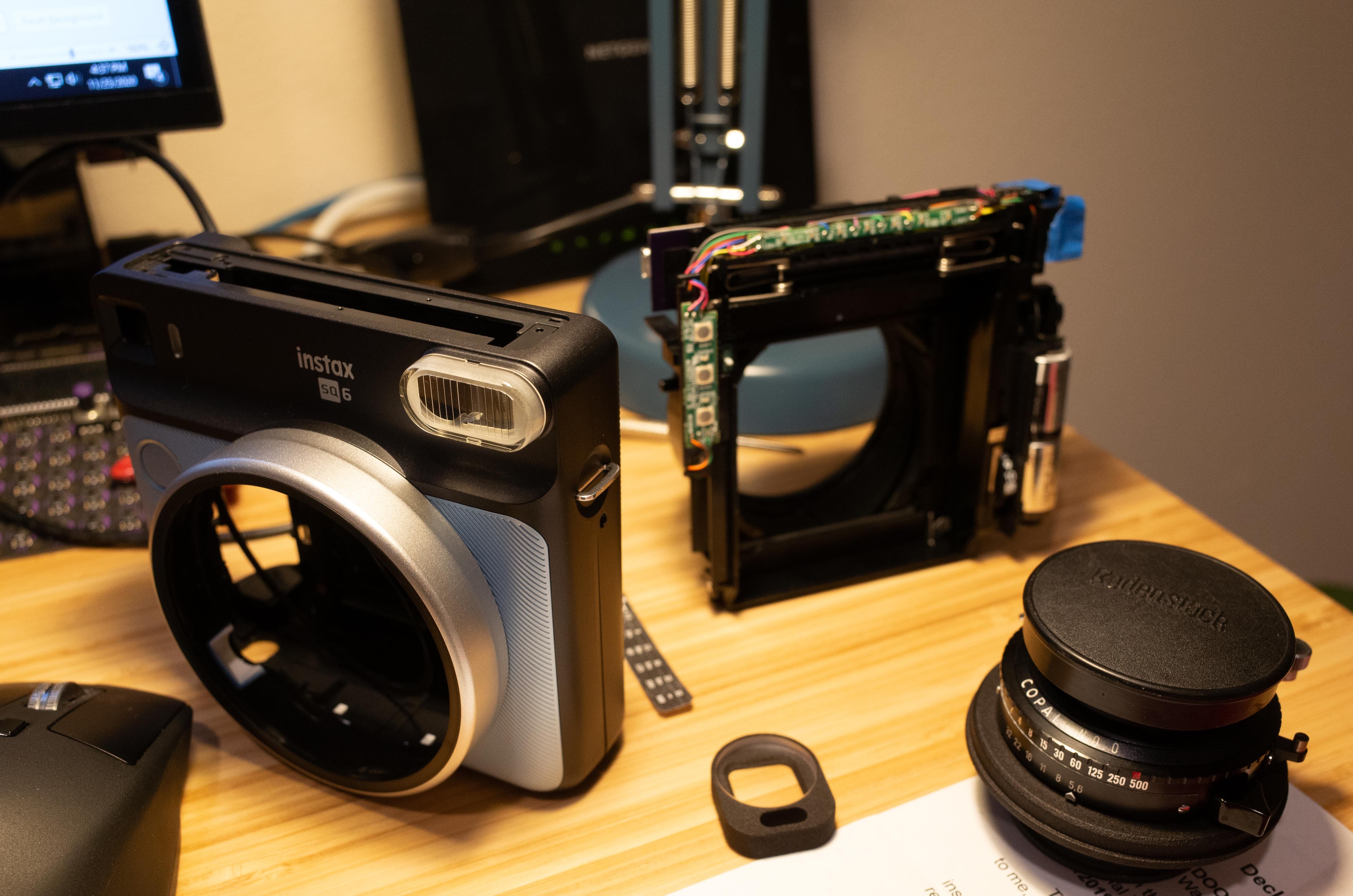

And here's the result.
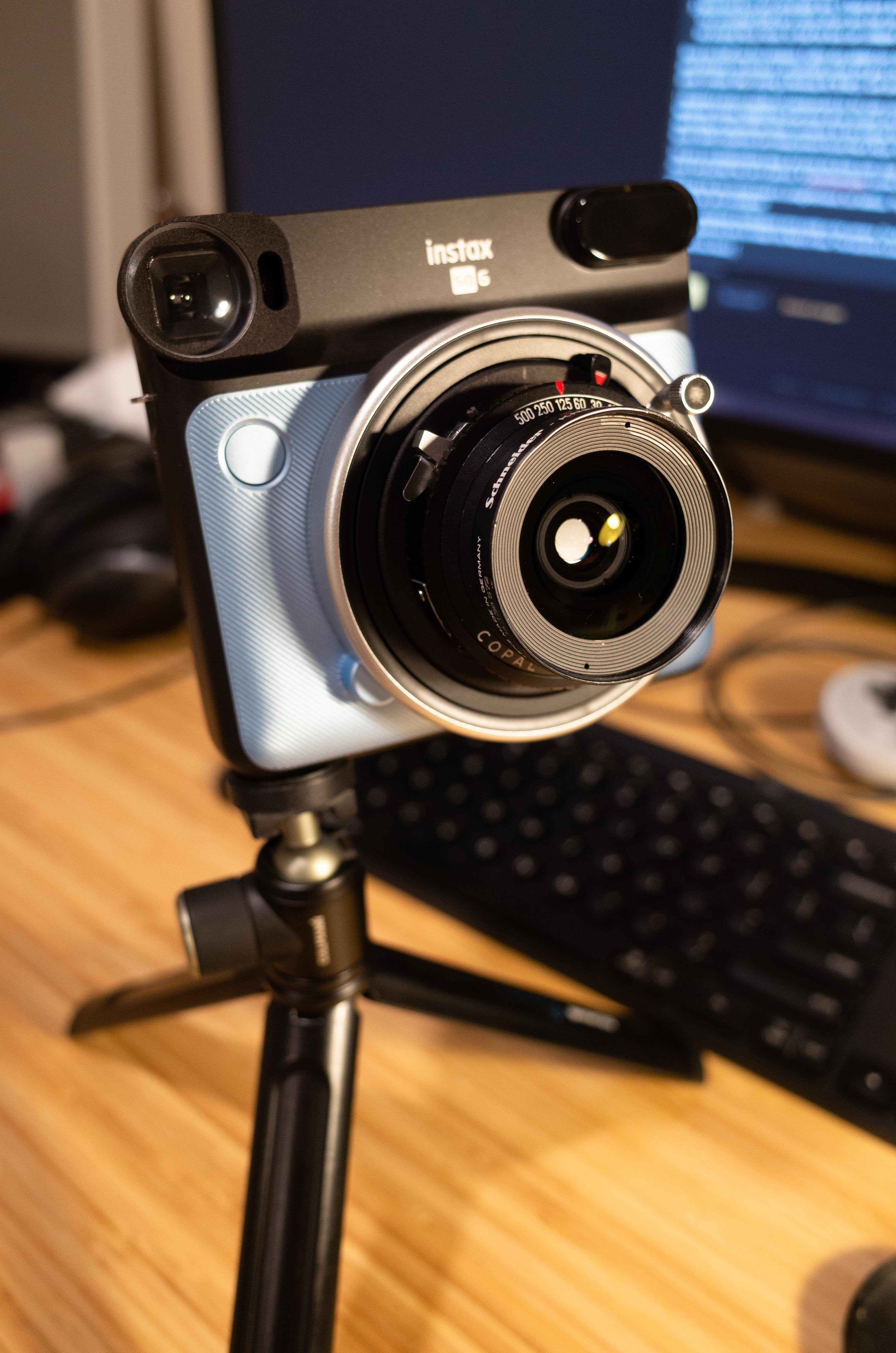
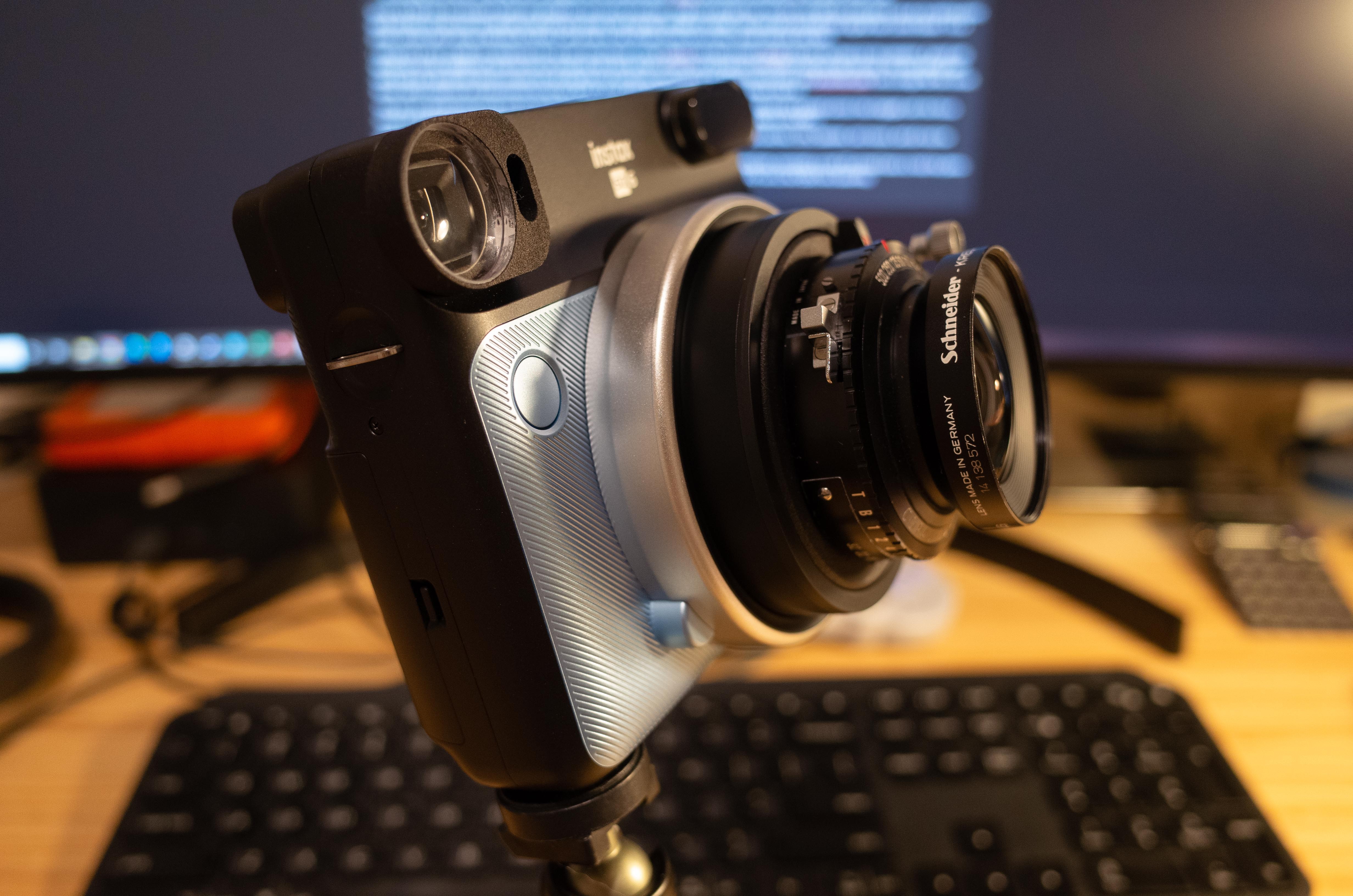

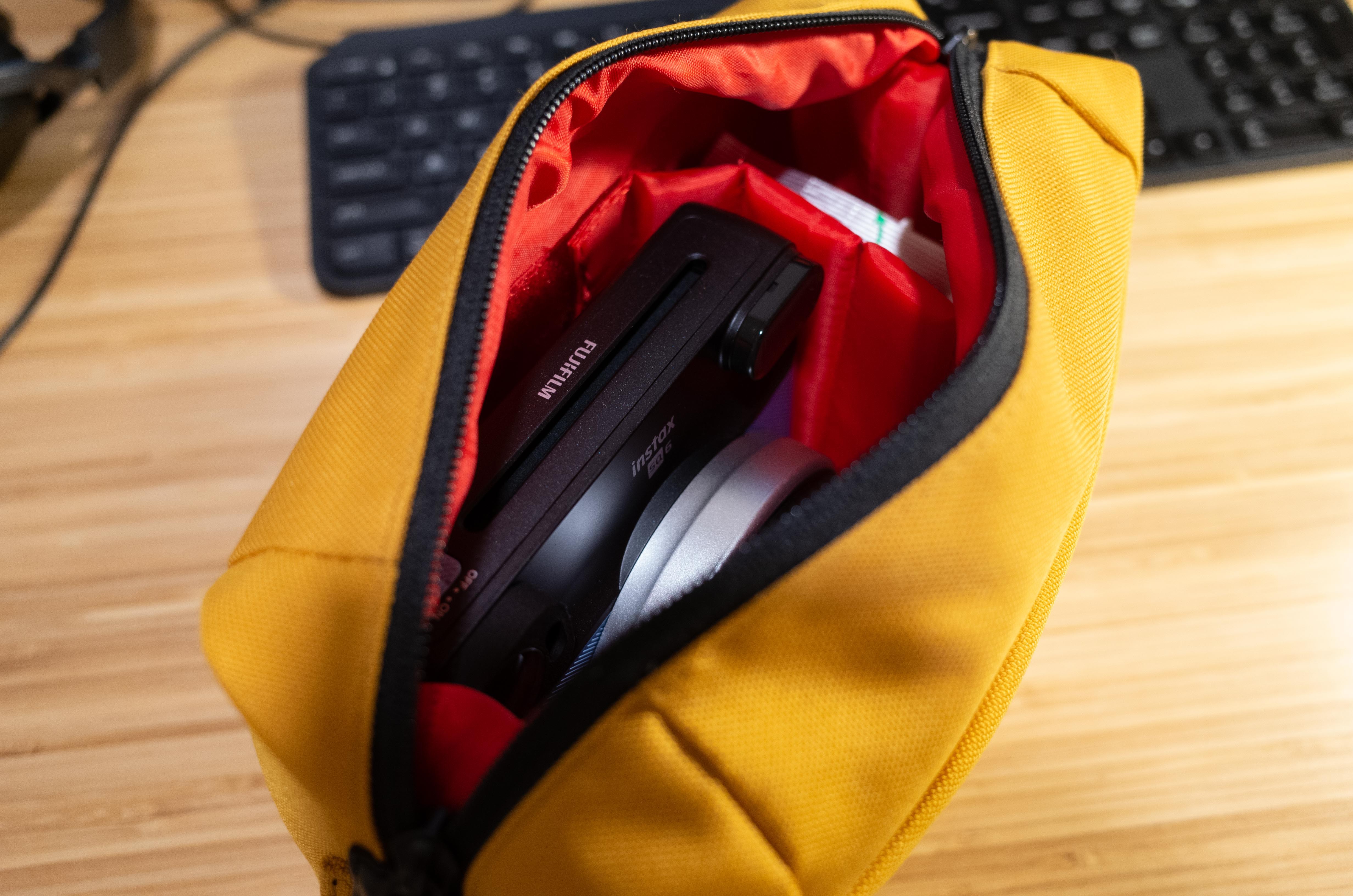
Getting the focus dialed in was a bit of a chore, because the USB port for programming is not accessible when the camera is all buttoned up. No shimming of the lens necessary here - all that has to be done is to adjust the set point for the focus (sensing the distance from the lens "home" position based on how many times the motor revolved, based on the number of "blips" from the photointerrupter).

I haven't had much time to take more than a few uninspired photos from around the neighborhood, but I'm pleased so far. You can fit a lot in the frame, and the metering seems to work well. Focus is easy due to the huge depth of field, even wide open. Right now I have the minimum focus distance set to 1 meter (by choice - it's possible to focus closer, but the depth of field gets thinner and parallax error more extreme), which isn't going to allow for anything closer than a half-body portrait. But the SA 47 mm is meant more for landscapes and architecture, anyhow.

Looking forward to playing around with this more, maybe with the Instax Monochrome film (now in Square format!). Until then, enjoy the source files. Be sure to read the warning about film eject motor polarity on the schematic.
Specifications
| Type | Superwide point-and-shoot |
| Objective | Schneider Super-Angulon 47 mm f/5.6 MC in Copal 0 shutter |
| Metering | Aperture priority reflective metering (minimum illuminance 1/15s at f/5.6, ASA 800) |
| Focusing | Scale focus (Infinity, 5m, 3m, 2m, 1.4m, 1m) |
| Viewfinder | Reverse Galilean with center spot, approx. 90% coverage |
 Kevin Kadooka
Kevin Kadooka
Discussions
Become a Hackaday.io Member
Create an account to leave a comment. Already have an account? Log In.
Wow Kevin I admire your spirit and dedication to this project! Amazing how much you put into this! I'm currently just thinking about hacking something in front of an Instax Wide, but this is next level. Just seeing what you did motivates me to push my much much simpler project further! Just wow :D
Are you sure? yes | no